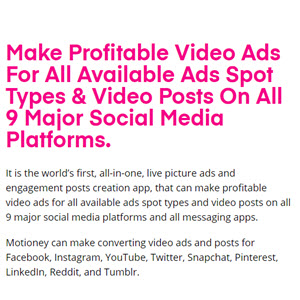Content Type
The Content-Type HTTP response header describes various aspects of the content that is being sent, including the character set, encoding, and MIME type. For most mobile content, the content type header looks like this:
Content-Type: text/xhtml; charset=utf-8
The first aspect of the Content-Type header is the Multipurpose Internet Mail Extensions (MIME) type. A MIME type is a media designation included in the header of a Web page that tells the mobile browser how to interpret the code that it is sending, and it is the value returned in the Content-Type request. MIME types also help the mobile browser determine when a file is supposed to be launched in the browser and when it should be launched as an application or in a separate program.
The MIME designation always includes a main type and a subtype, which are separated by a forward slash; thus, the MIME type for an image might be image/GIF. Eight primary MIME types exist: application, audio, image, message, model, multipart, text, and video. Table 9.1 shows some of the more common mobile MIME types (excluding some media MIME types, which are covered later).
|
Table 9.1 Common Mobile M |
1IME Types | |
|
Extension |
Remark | |
|
application/java-archive |
Binary |
Java archive |
|
application/java-archive |
.jar |
Java archive |
|
application/mtf |
.mtf |
Motorola theme |
|
application/vnd.alcatel.animation |
.ani |
Alcatel animation (converted animated GIF file) |
|
application/vnd.alcatel.colorpalette |
.pco |
Alcatel image (256-color picture) |
|
Chapter |
9 Mobile |
Website Development 163 |
|
Extension |
Remark | |
|
application/vnd.alcatel.picture |
.pic |
Alcatel icon |
|
application/vnd.alcatel.seq |
.seq |
Alcatel polytone (converted MIDI file) |
|
application/vnd.alcatel.vox |
.vox |
Alcatel sound format (converted WAV file) |
|
application/vnd.eri.thm |
.thm |
Sony Ericsson theme |
|
application/vnd.mophun.application |
.mpn |
Sony Ericsson mophun game file; this file runs only on a mophun runtime environment |
|
application/vnd.nokia.gamedata |
.nqd |
Nokia game data |
|
application/vnd.Nokie.ringing-tone |
.rng |
Nokia ringtone |
|
application/vnd.nok-s40theme |
.nth |
Nokia theme |
|
application/vnd.rn-realmedia |
.rm |
RealMedia video format |
|
application/vnd.siemens-mp.skin |
.scs |
Siemens color scheme; compressed file containing several files |
|
application/vnd.siemens-mp.theme |
.sdt |
Siemens theme file; compressed file containing several files |
|
application/vnd.symbian.install |
.sis |
Symbian installation |
|
application/vnd.symbian.install |
.sis |
Symbian installer |
|
application/vnd.wap.mms-message |
.mms |
Binary MMS in MMS Encapsulation Protocol format |
|
application/vnd.wap.xhtml+xml |
.xhtml |
XHTML-MP markup |
|
application/xhtml+xml |
.xhtml |
XHTML-MP markup |
|
application/x-nokiagamedata |
.ngd |
Nokia game data |
|
application/x-pmd |
.pmd |
Polyphonic ringtone format |
|
application/x-smaf |
.mmf |
Samsung truetone format |
|
audio/adpcm |
.adp |
LG truetone format |
|
audio/midi |
.mid |
MIDI audio format (ringtones) |
|
audio/midi |
.midi |
MIDI audio format (ringtones) |
|
audio/vnd.qcelp |
.qcp |
QCELP audio file |
|
audio/x-aac |
.aac |
Nokia audio format |
|
image/gif |
.gif |
GIF format |
|
image/jpeg |
.jpeg |
JPEG format |
|
Table 9.1 Continued | ||
|
Extension |
Remark | |
|
image/jpg |
.jpg |
JPG format |
|
image/png |
png |
PNG format |
|
image/vnd.nok-3dscreensaver |
.n3a |
Nokia screensaver |
|
image/vnd.nok-oplogo-color |
.nol |
Nokia operator logo (GIF image) |
|
image/vnd.wap.wbmp |
.wbmp |
WAP content: WAP bitmap image |
|
image/vnd.wap.wbmp |
.wbmp |
Wireless bitmap Image |
|
image/x-bmp |
.bmp |
BMP image |
|
text/css |
.css |
CSS1, CSS2, and wireless CSS |
|
text/html |
.html |
HTML |
|
text/vnd.sun.j2me.app-descriptor |
.jad |
J2ME content: Java descriptor file |
|
text/vnd.wap.wml |
.wml |
WML markup |
|
text/vnd.wap.wmlscript |
.wmls |
WML Script |
|
text/x-co-desc |
.cod |
Nokia Content Object Description file |
|
text/x-emelody |
.emy |
Sony Ericsson eMelody sound format |
|
text/x-imelody |
.imy |
iMelody, a feature-rich ringtone format |
|
text/x-vCalendar |
.vcs |
vCalendar, a format for electronic calendaring and scheduling |
|
text/x-vCard |
.vcf |
Exchanging information about people and resources |
|
video/avi |
.avi |
AVI video format |
|
video/mpeg |
.mpeg |
MPEG video format |
|
x-epoc/x-sisx-app |
.sisx |
Symbian installer |
|
x-nokia-widget |
.wgz |
Nokia Widget Archive |
Most Web servers do not come preconfigured to support mobile MIME types, although this is becoming more common. If you are serving mobile content, it is a good idea to check your servers and manually add any mobile MIME types that are not already present and recognized by the Web server.
Most Web servers do not come preconfigured to support mobile MIME types, although this is becoming more common. If you are serving mobile content, it is a good idea to check your servers and manually add any mobile MIME types that are not already present and recognized by the Web server.
In some cases, devices can accept multiple file types but still have a preference, usually because the device has a more complete and comprehensive capability to execute a specific file type. You might be able to use a combination of User-Agent headers, accept headers, and a User-Agent profile (UAProf.) to provide the preferred type of content based on the handset that is accessing the site.
The second part of the Content-Type header is the character set, or charset. The character set you choose can impact the bandwidth necessary to transmit a page, because some characters require more memory than others. If your website is written primarily in Latin-based characters and languages, such as English, French, and German, you should be using UTF-8. If your website is written in non-Latin characters, such as Chinese, Japanese, or Hebrew, UTF-16 is ideal.
Continue reading here: Tracking Mobile SEO and Keyword Rankings
Was this article helpful?

